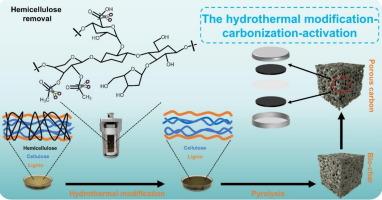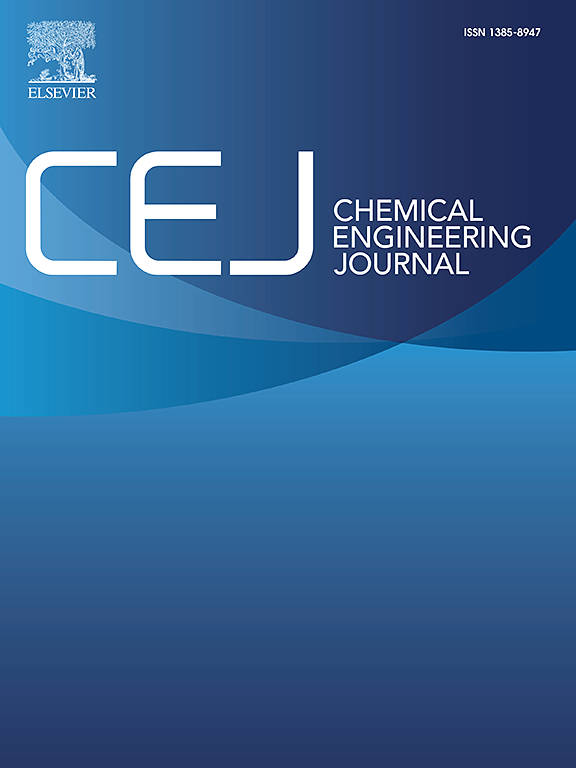Breaking the hemicellulose barrier for the preparation of high-performance porous carbon for supercapacitors and Zinc-Ion capacitors
IF 13.3
1区 工程技术
Q1 ENGINEERING, CHEMICAL
引用次数: 0
Abstract
In recent years, biomass-based carbon supercapacitors and zinc-ion capacitors (ZICs) have garnered significant interest from researchers. Traditional methods for preparing porous carbon (PC) typically involve a carbonization-activation process. PC prepared through this method generally exhibits issues such as low specific surface area (SSA) and poor pore structure, which result from the inherently compact structure of the biomass. Therefore, this study proposes a novel preparation method, namely the hydrothermal modification-carbonization-activation process. This new process disrupts the cross-linked structure of the biomass, resulting in PC with a well-developed pore structure and a large SSA. Experimental results show that the unmodified samples have a low SSA, while the SSA of the PC produced from hydrothermal modification is significantly improved. The best-performing sample exhibited a high SSA of 2985.60 m2/g. In the three-electrode system with 6 M KOH, the sample achieved a specific capacitance of 339.8F/g at 0.5 A/g. In the organic electrolyte, its symmetrical supercapacitor achieved an energy density of 31.83 Wh/kg at 337.5 W/kg. Furthermore, it demonstrated good capacitance retention in both aqueous and organic electrolytes, with values of 98.0 % and 100 %, respectively. The assembled ZICs exhibited a high specific capacitance of 146.3 mAh/g at 0.1 A/g. Additionally, the experimental results indicate that the SSA of the pivotal factor determining the final SSA of the PC. This novel approach, which regulates the SSA of the PC by adjusting the SSA of the biochar, offers valuable insights for the future preparation of biomass-derived PC.

求助全文
约1分钟内获得全文
求助全文
来源期刊

Chemical Engineering Journal
工程技术-工程:化工
CiteScore
21.70
自引率
9.30%
发文量
6781
审稿时长
2.4 months
期刊介绍:
The Chemical Engineering Journal is an international research journal that invites contributions of original and novel fundamental research. It aims to provide an international platform for presenting original fundamental research, interpretative reviews, and discussions on new developments in chemical engineering. The journal welcomes papers that describe novel theory and its practical application, as well as those that demonstrate the transfer of techniques from other disciplines. It also welcomes reports on carefully conducted experimental work that is soundly interpreted. The main focus of the journal is on original and rigorous research results that have broad significance. The Catalysis section within the Chemical Engineering Journal focuses specifically on Experimental and Theoretical studies in the fields of heterogeneous catalysis, molecular catalysis, and biocatalysis. These studies have industrial impact on various sectors such as chemicals, energy, materials, foods, healthcare, and environmental protection.
 求助内容:
求助内容: 应助结果提醒方式:
应助结果提醒方式:


